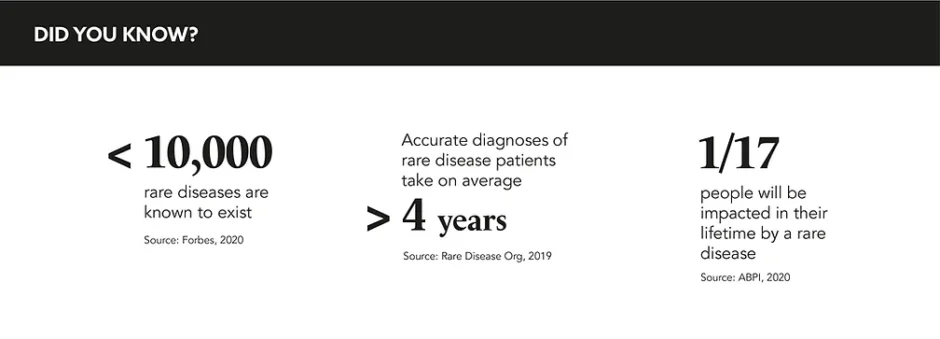Words by Michaila Byrne
Through the process of trying to find answers, they become highly educated, and set increasingly high expectations for their care
From birdwatchers to metal detectorists, train spotters to puppeteers, corners of the internet have bonded tribes of passionate, like-minded individuals from across the world who share one unifying identifier. Rare disease patients are an increasingly empowered subset of this shift. Having once believed their experiences to be entirely unique to them, the nature of our changing world is connecting and educating these once solitary patients; but the extensive knowledge gap of their conditions remains shrouded in mystery. How can medical affairs collaborate with these invaluable patients as they seek to overcome the distinct set of challenges that rare diseases present?
No matter how taxing their conditions, rare disease patients are coming out of the shadows as authorities in their own ‘specialist subjects’. Jason Bradt, Head of Rare Disease North America, MA, Ipsen, explains: “Rare disease patients and their support systems often have long and arduous journeys to get to a correct diagnosis. Through the process of trying to find answers, they become highly educated, and set increasingly high expectations for their care. This hunt for answers often leads to frustration with the healthcare system.” There is a palpable demand in the rare disease space for the integration of caregivers as well as patients into the dialogue. Trishna Bharadia, Health Advocate and Patient Engagement Champion, confirms: “Within the rare disease space… carers might have a bigger role to play than in many non-rare diseases.”
Patient frustrations often stem from the lack of education and surrounding scientific literature on rare diseases. At the onset of a rare disease, signs and symptoms can often be mistaken for more common ailments, and a delay in diagnosis can trigger a great deal of adversity. Santosh Jha, Head of MA, Rare Diseases & Neurosciences, Growth Emerging Markets Region, Takeda, explains: “Lack of awareness and appreciation of rare diseases in general physician and specialities makes it really difficult to spot rare disease patients. The conventional medical education principle taught in colleges, advocating ‘think common ailments’ when diagnosing, makes it more difficult for physicians to ‘think rare.’”
Rare disease communities can be relatively small, so it is even more crucial that pharmaceutical companies think beyond the medication and develop more personal relationships as they grapple with a disease. To reinstate faith in our healthcare system, MA must enter into open-minded, collaborative partnerships with patients. Bradt summarises: “Through education, research, training, and engagement MA can support the mission of rare disease patients and advocates.”
Pharma can replicate the discussions typically had with scientific experts with savvy patients, carers, and disease state advocacy organisations on new platforms. “The channels for this communication are constantly evolving as seen by the increased importance of virtual support networks formed on social media channels and the development of ‘key online influencers’,” confirms Bradt. “Social media has become a critical channel of communication for disease state education in rare diseases. Geographically dispersed individuals can interact near real time to share information and get the answers they are looking for.”
Consider the incredible case of Betrand Might: a father who was advised that his son might be the only living person with the rare genetic heart condition: NGLY1. After futile years without answers, he sent out a rallying call on social media, to find others experiencing similar symptoms. Miraculously, a sufficient number of subjects were identified to begin the running of clinical trials, the funding of therapies, and to ultimately improve the scientific literature on the condition. Where there’s a will, there’s a way, and with mobilised patients and caregivers carving their own paths, there is no shortage of ‘will’ in this space.
Jha emphasises that structural barriers delaying and preventing access to treatment are an additional important factor at play here, and MA have an opportunity to implement more institutional and wide-reaching changes: “MA can contribute by improving access to medicines by addressing barriers that delay and prevent access. This is not just pricing, but also policing shaping and regulatory approvals by working very closely with government, academia, and patient associations and groups.”
Rare disease patients are tenacious, and their diseases are complex, but MA are well suited to tackle these challenges. If pharma continues to support carers as well as patients, collaborate with pillars of the rare disease community, and become active advocates for the education of all stakeholders, the knowledge gap that exists in the rare disease space will begin to close.
No matter our unique passions, experiences, or conditions, we are not alone in the world, and with the democratisation of information combined with our freedom to share and connect, there is hope that these more niche, atypical conditions will one day receive the same attention that more common illnesses have today.










